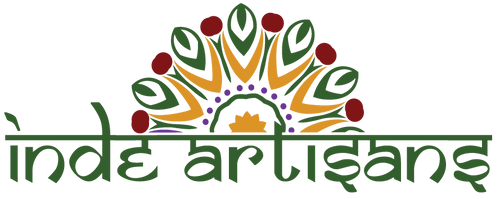From Threads To Tapestry: A Weaving Journey
The story of threads dates back to ancient times. Tales of threads permeate every corner of the diverse Indian landscape. These threads have evolved into cherished traditions, shaping the rich tapestry of Indian art and culture over generations. No wonder India is popular for its intricate weaves and amusing textile production.
So, let us dive into the weaving journey of India and reminisce about a long-standing tradition that holds a special place in the textile industry to date.
Exploring India Through Weaves
Indian textiles reflect its rich cultural heritage. Numerous weaving styles showcase a unique and vibrant range of fabrics throughout the country. From the luxurious silk sarees of Kanchipuram to the unique Muga and Eri silk of Assam, Indian textile industries are interwoven by skilled weavers.
One of the most fascinating symbols of weaving in Indian culture is the handloom. It is a traditional weaving method that uses a wooden or bamboo loom. Artisans use it by hand without relying on electricity. Skilled workers across regions utilize this technique to craft intricate silk sarees. In fact, the handloom industry is the country’s second-largest cottage industry, employing more than 3 million artisans.
Basics Of Handloom
Let us quickly understand the workings of the handloom. Handlooms have a historical origin dating back to ancient civilizations. It is a weaving machine used to make fabrics in the textile industry. It functions manually and requires skilled artisans to comprehend the craft of weaving. Essentially, it consists of wooden bars between which the warp is stretched to form the basis for weaving fabrics.
Handloom comes in various types. They are the primitive or vertical loom, pit loom, frame loom, Chittaranjan loom, heddle loom, Hattersley loom, and more. They come in different shapes and sizes. You will find them as tiny hand-held frames to vast mechanical tools.
The main function of handloom is to clutch the twisted threads under pressure to allow the interweaving of the weft strands. So, the warp and weft are the two primary elements of weaving. The warp refers to the threads running lengthwise, while the weft refers to the threads running crosswise. We hold the warp under tension on a loom frame and draw the weft through the warp thread. Hence, we create our fabric through an interlocking process.
There are various techniques for weaving. At Inde Artisans, we include plain weave, twill weave, satin weave, dobby weave, jacquard weave, and more. Each weaving technique delivers fabrics with distinct characteristics.

Textile Trails Around India
Gujarat is known for its Tanchoi silk weave and Bandhani tie and dye artistry. Maharashtra has Paithani, silk sarees with peacock motifs. Assam is popular for Muga silk, derived from Assam’s silkworms. Kanjeevaram of Tamil Nadu and Kalamkari of Andhra Pradesh are also timeless treasures. Moreover, we have Bhagalpuri silk from Bihan, Naga shawls from Nagaland, and Kosa silk from Chhattisgarh.
These are only a brief cumulation of weaving cultures from around the country. There are more that make the Indian ethos vibrant and vast.
End Note
At Inde Artisans, we aim to promote weaving practices that expose our rich and colorful culture. We use 100% certified organic cotton and other organic yarns to produce handwoven and knitted fabrics ideal for everyday wear. We also leverage machinery to enhance productivity. Further, we focus on textile crafts such as block printing, embroidery, and tie-dying, combined with weaving to produce unique pieces.
Woven fabrics also allow us to cater to customer demands, as they offer immense flexibility in terms of design. Advanced weaving technologies, like computerized jacquard looms and dobby looms, further facilitate detailed designs and complex patterns.
Hence, the weaving culture in our manufacturing unit combines elements of traditional craftsmanship with modern production methods. We cherish the traditions of craftsmanship while maintaining efficiency. Recently, many manufacturing and textile units have shown renewed interest in traditional artisan skills, and we second this emerging trend.






0 comments